
Curculio is a genus of weevils belonging the family Curculionidae and subfamily Curculioninae. Members of the genus are commonly referred to as acorn weevils or nut weevils as they infest the seeds of trees such as oaks and hickories. The adult female weevil bores a tiny hole in the immature nut to lay her eggs, which then hatch into legless grubs. In autumn, the grubs bore holes through the shells from the inside to emerge into the soil where they may live for a year or two before maturing into adults.
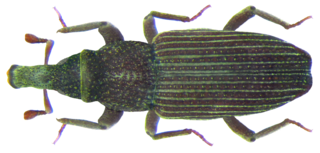
Dryophthorus is a genus of true weevils in the family of beetles known as Curculionidae. There are at least 60 described species in Dryophthorus.

Acmaeodera is a genus of beetles in the family Buprestidae, a group of metallic wood-boring beetles favored by insect collectors. Whereas most beetles including most buprestids fly with their elytra held out and vibrating their hindwings to give lift and thrust, Acmaedodera, however, fly with their hind wings only — the elytra are fused down the center and form a shield over the insect's abdomen, even during flight. This fact, combined with the banding across the abdomen which is common in this family, gives many of them a distinct wasp-like appearance when in flight. Several are therefore considered hymenopteran mimics.

Sphenophorus is a genus of weevils, often known as billbugs, in the family Curculionidae, and tribe Sphenophorini. Eleven species of billbugs infest managed turfgrass in North America.

Geonemini is a weevil tribe in the subfamily Entiminae.
Panscopus is a genus of broad-nosed weevils in the family Curculionidae. There are at least 20 described species in Panscopus.
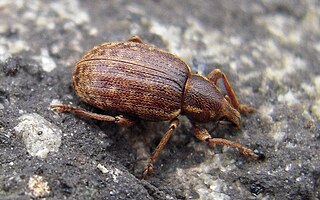
Lepidophorus is a genus of broad-nosed weevils in the family Curculionidae. There are about 13 described species in Lepidophorus.

Mecinus is a genus of true weevils in the family of beetles known as Curculionidae. There are at least 90 described species in Mecinus.
Mesagroicus is a genus of broad-nosed weevils in the beetle family Curculionidae. There are at least 40 described species in Mesagroicus.
Trichalophus is a genus of broad-nosed weevils in the beetle family Curculionidae. There are more than 50 described species in Trichalophus.

Lepyrus is a genus of true weevils in the beetle family Curculionidae. There are more than 70 described species in Lepyrus.
Gerstaeckeria is a genus of cactus weevils in the beetle family Curculionidae. There are more than 40 described species in Gerstaeckeria.
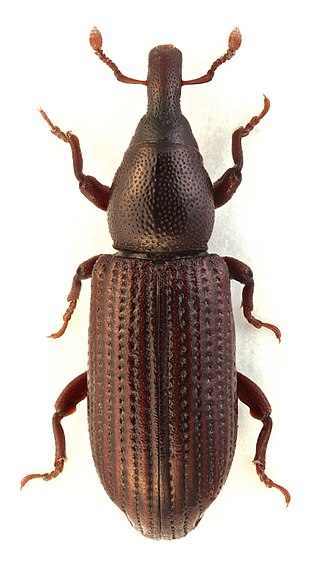
Phloeophagus is a genus of true weevils in the beetle family Curculionidae. There are more than 30 described species in Phloeophagus.
Pseudomus is a genus of hidden snout weevils in the beetle family Curculionidae. There are more than 20 described species in Pseudomus.
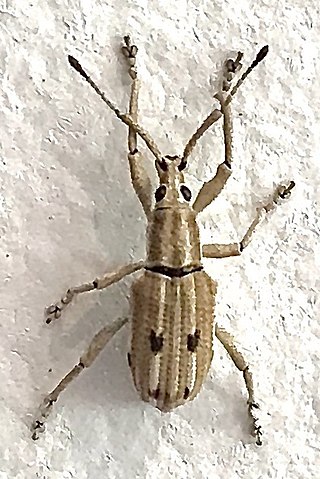
Eustylus is a neotropical genus of broad-nosed weevils in the subfamily Entiminae, tribe Eustylini.
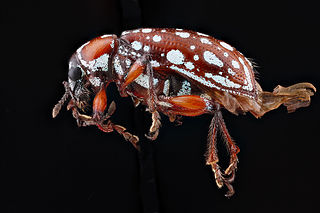
Lachnopus is a genus of broad-nosed weevils in the family Curculionidae distributed in the Caribbean Region.
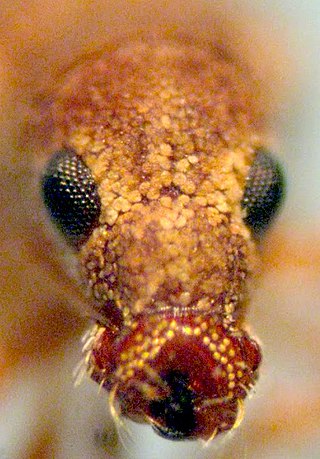
Anypotactus is a genus of broad-nosed weevils in the beetle family Curculionidae, subfamily Entiminae, tribe Anypotactini, present across Central and South America. There are six described species in Anypotactus.












